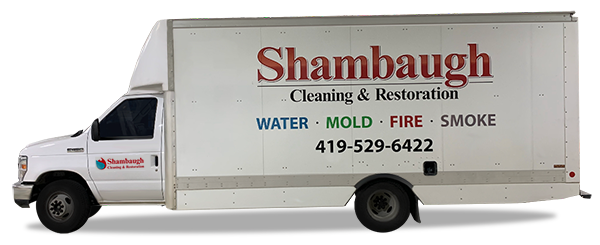Is it safe to live in a house with black mold? The answer is no. Black mold can pose serious health risks to you and your loved ones, which is why it’s crucial to address any black mold issues in your home promptly.
Black mold is a type of fungus that typically thrives in damp and humid environments, such as bathrooms, basements, and crawl spaces. It can grow on any surface, including walls, ceilings, and floors, and is often difficult to detect until it has spread to a significant extent.
Exposure to black mold can cause a range of health problems, from minor allergic reactions to severe respiratory issues. This is especially true for individuals with weakened immune systems, young children, and the elderly who are more susceptible to mold-related illnesses.
In this article, we will explore the potential health hazards associated with living in a house contaminated with black mold. We will also discuss the identification and removal of black mold through professional mold remediation. Lastly, we will provide practical strategies for avoiding future black mold growth and keeping your living space safe for you and your loved ones.
Key Takeaways
- Black mold poses significant health risks to individuals who live in contaminated homes.
- Exposure to black mold can lead to respiratory issues and allergic reactions, particularly in those with weakened immune systems.
- Identification and safe removal of black mold is crucial for maintaining a healthy living environment.
- Professional remediation services should be sought for severe cases of black mold contamination.
- Preventive measures, such as controlling humidity levels and addressing water leaks promptly, can minimize the chances of black mold recurrence.
What is Black Mold?
Black mold, also known as Stachybotrys chartarum, is a type of fungus that thrives in warm, damp environments such as bathrooms, kitchens, and basements. It typically appears as black or dark green patches on walls, ceilings, and other surfaces.
Unlike other types of mold, black mold releases toxic spores into the air that can cause respiratory problems, allergies, and other health issues if inhaled repeatedly or in high concentrations.
It’s important to note that not all black molds are toxic, and professional testing is needed to determine the exact type and level of danger present in your home.
When left unchecked, black mold can spread quickly and cause extensive damage to your home and your health. Early identification and prompt remediation are crucial for preventing the growth and spread of black mold in your living space.
Identifying Black Mold in Your Home
Identifying black mold in your home can be a challenge. However, recognizing the presence of black mold is crucial for effective remediation. Here are some common signs and symptoms to look out for:
| Signs and Symptoms | Description |
|---|---|
| Visible growth | Black or dark green patches on walls, ceilings, or floors |
| Musty odor | A strong, musty odor that is often associated with dampness and mold growth |
| Mold-related health symptoms | Unexplained respiratory issues, itchy eyes, skin irritation, or other allergic or toxic symptoms |
If you suspect black mold is present in your home, it is crucial to have a professional inspection and testing done to confirm the presence of black mold and its extent of growth. Ignoring the signs and symptoms of black mold can lead to serious health issues for you and your loved ones.
Health Risks Associated with Black Mold Exposure
Exposure to black mold can pose a variety of health risks, which can be particularly dangerous for vulnerable populations such as young children, the elderly, and those with weakened immune systems. Prolonged exposure to black mold spores can lead to respiratory problems such as coughing, wheezing, and difficulty breathing.
In addition, black mold exposure can cause or worsen allergic reactions, including nasal congestion, runny nose, and skin irritation. Some people may also experience headaches, dizziness, and fatigue as a result of exposure.
If left unaddressed, black mold exposure can lead to more severe health issues such as pulmonary hemorrhage or memory loss. It is critical to seek medical attention if you suspect that you or a loved one is experiencing symptoms related to black mold exposure.
Incorporating effective prevention measures and reducing moisture in your home can help mitigate the risks associated with black mold exposure. However, if you suspect that your home is contaminated with black mold, it is essential to seek the help of a professional mold remediation service to safely and effectively remove the mold.
Protecting Yourself and Your Loved Ones from Black Mold
To protect yourself and your family from black mold exposure, it is essential to take preventive measures and maintain a clean and dry living environment. Follow these practical tips and strategies to stay safe and mold-free:
- Monitor humidity levels: High humidity levels promote the growth of black mold. Use a dehumidifier to maintain humidity levels below 60%.
- Fix leaks and water damage: Moisture from leaks and water damage can create favorable conditions for mold growth. Fix any leaks and water damage promptly.
- Improve ventilation: Proper ventilation helps reduce humidity and prevent mold growth. Install exhaust fans in kitchens and bathrooms, and open windows to increase airflow.
- Clean regularly: Dust and debris can provide a food source for mold. Regularly clean and vacuum your home to remove any potential mold sources.
- Protect yourself during cleaning: When cleaning mold, wear protective equipment such as gloves and a mask to prevent mold spores from entering your lungs.
By implementing these preventive measures, you can reduce the risk of black mold growth in your home and protect your health and your family’s well-being.
Remediation and Removal of Black Mold
If your home is contaminated with black mold, it’s crucial to seek the assistance of professional mold remediation and removal services. Attempting to remove the mold yourself can not only be ineffective but can also increase the likelihood of further spreading the spores throughout your home.
Black mold remediation typically involves several steps, including:
| Step | Description |
|---|---|
| Assessment | A professional mold inspector will assess the level of contamination and devise a remediation plan. |
| Containment | The contaminated area is sealed off, and the air pressure is lowered to prevent the spread of mold spores. |
| Removal | The mold is carefully removed and disposed of using specialized equipment and techniques. |
| Cleaning | The affected areas are thoroughly cleaned and sanitized to eliminate any remaining mold spores. |
| Prevention | Preventive measures are taken to reduce the risk of future mold growth, such as fixing leaks and improving ventilation. |
Professional mold remediation and removal services ensure the complete elimination of mold spores from your home, safeguarding the health of you and your family. Don’t take any chances when it comes to black mold removal. Contact a professional mold remediation company today.
Reducing the Risk of Black Mold Recurrence
After addressing the black mold issue in your home, it’s important to take action to prevent its reoccurrence. By following these tips, you can protect your living space from further infestations:
- Control humidity: Black mold thrives in damp environments, so keeping your home’s humidity level below 60% can help prevent its growth. Use dehumidifiers in high-humidity areas like bathrooms, kitchens, and basements, and make sure your home has adequate ventilation.
- Fix leaks: Moisture from plumbing leaks or roof damage can promote black mold growth. Repair any leaks or water damage promptly to prevent mold from taking hold.
- Clean and disinfect: Regular cleaning and disinfection can help prevent black mold growth. Pay special attention to areas prone to moisture buildup, such as showers, tubs, and sinks. Use a bleach solution or a commercial disinfectant that contains quaternary ammonium compounds to kill mold spores.
- Inspect your home: Regularly inspect your home for signs of black mold growth, such as musty odors or visible signs of mold. Address any issues promptly to prevent the mold from spreading.
By following these prevention measures, you can reduce the risk of black mold recurrence in your home and protect your health and well-being.
Conclusion
In conclusion, the health risks associated with black mold in your home are serious and should not be ignored. By understanding what black mold is and how to identify it, you can take the necessary steps to protect yourself and your loved ones from exposure. If you suspect that your home has black mold, it is important to seek professional help for remediation and removal. Taking preventive measures, such as controlling moisture levels and ensuring proper ventilation, can also help reduce the risk of black mold recurrence in your home. Remember that a safe and healthy living environment starts with your diligence and willingness to address black mold issues promptly.
FAQ
What are the health risks of black mold in your home?
Living in a house contaminated with black mold can have serious health consequences. Prolonged exposure to black mold spores can lead to respiratory issues, allergic reactions, and other health problems. It is important to address black mold issues promptly to protect yourself and your loved ones.
What is black mold?
Black mold, also known as Stachybotrys chartarum, is a type of fungus that thrives in damp and humid conditions. It appears black or dark green in color and often has a musty odor. Black mold can grow on various surfaces, such as walls, ceilings, and flooring, and it is known for producing toxic spores that can impact indoor air quality.
How do I identify black mold in my home?
There are several signs that can help you identify the presence of black mold in your house. These include visible black or dark green patches on surfaces, a strong musty odor, and the occurrence of health symptoms such as coughing, sneezing, and skin rashes. If you suspect black mold, it is advisable to consult with a professional for proper testing and identification.
What are the health risks associated with black mold exposure?
Exposure to black mold can result in various health problems. Common symptoms include coughing, wheezing, nasal congestion, throat irritation, and eye irritation. Prolonged exposure may lead to more severe respiratory issues, allergic reactions, and even neurological symptoms in some cases. Individuals with compromised immune systems or underlying respiratory conditions may be especially vulnerable to the health risks of black mold.
How can I protect myself and my loved ones from black mold?
There are several measures you can take to minimize the risk of black mold exposure. These include addressing any water leaks or excess moisture issues promptly, ensuring proper ventilation in your home, using dehumidifiers in damp areas, regularly cleaning and maintaining your HVAC system, and promptly drying any wet or damp materials. Additionally, it is important to address any signs of black mold growth immediately by seeking professional remediation services.
How is black mold remediated and removed?
When dealing with black mold infestations, it is essential to hire professional mold remediation and removal services. These experts have the knowledge, equipment, and experience to safely and effectively eliminate black mold from your home. The process typically involves containment of the affected area, thorough cleaning and disinfection, proper removal and disposal of contaminated materials, and the implementation of preventive measures to prevent recurrence.
How can I reduce the risk of black mold recurrence in my home?
To minimize the chances of black mold reappearing in your home, you can take proactive measures such as controlling indoor humidity levels, fixing any water leaks or sources of moisture, regularly inspecting and maintaining your home’s plumbing, using mold-resistant materials in renovations or construction, and practicing proper ventilation in areas prone to high moisture. Additionally, conducting regular inspections for signs of mold growth and addressing them promptly can help prevent future black mold issues.






